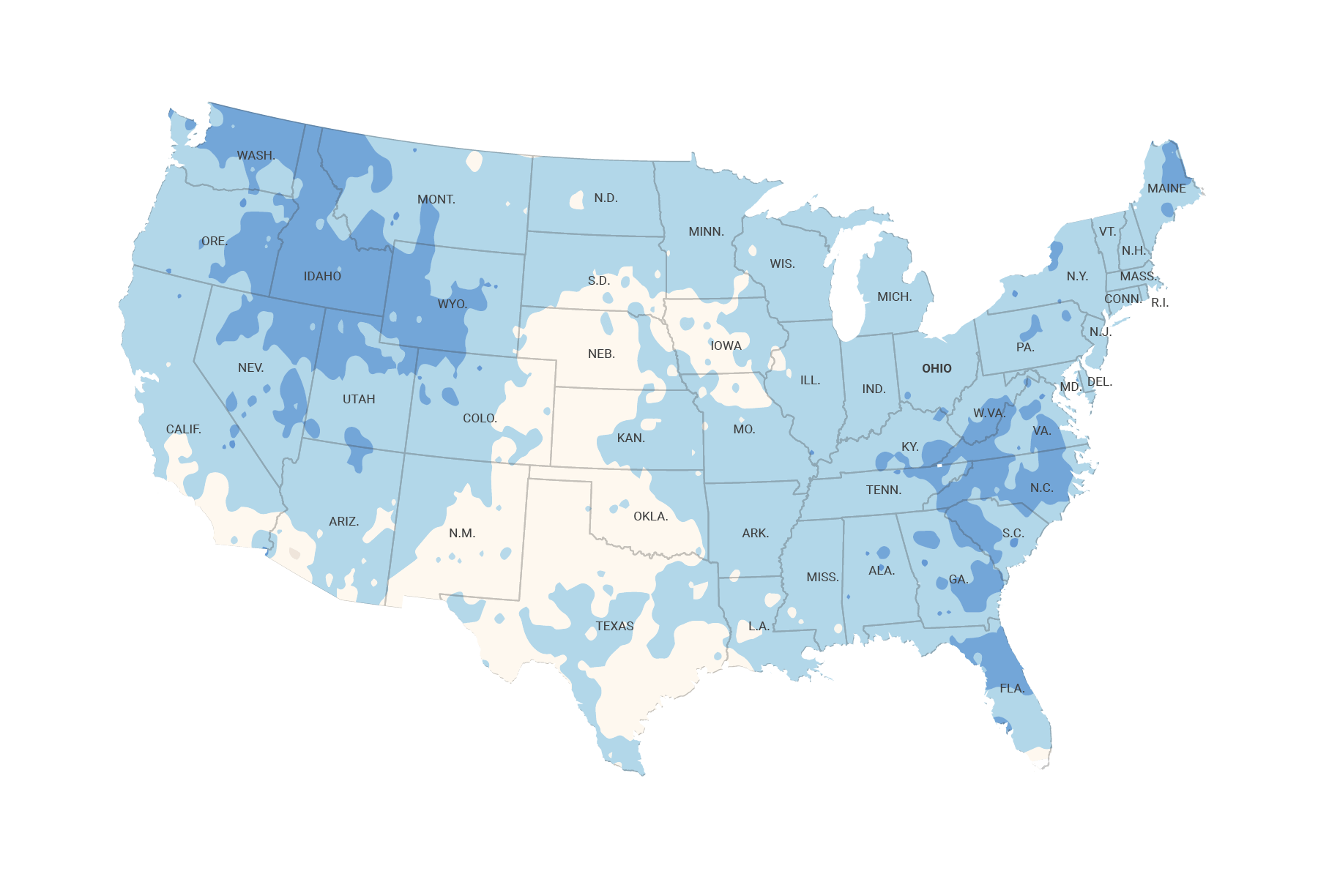Acadian Gardens 70461 Flood Zone?
Flood risk overview for St. Tammany Parish
There are 41,609 properties in St. Tammany Parish that have greater than a 26% chance of being severely affected by flooding over the next 30 years. This represents 46% of all properties in the county.
In addition to damage on properties, flooding can also cut off access to utilities, emergency services, transportation, and may impact the overall economic well-being of an area. Overall, St. Tammany Parish has a severe risk of flooding over the next 30 years, which means flooding is likely to impact day to day life within the community.
Explore the maps below to learn more about the homes , roads, businesses, and services at risk in St. Tammany Parish.
Map View:
There are solutions to protect St. Tammany Parish
Communities that adapt to higher risks can limit damage and lower flood insurance costs. St. Tammany Parish is already investing in flood risk reduction projects, but more may be needed. Learn more about solutions.
16
Known adaptation measures
i
2,417
Properties protected by adaptation
i
Lowering flood risk starts with higher standards
Some places plan to a higher standard (a "500 year" standard) that lowers the number of properties at severe risk. Protecting homes to this level would reduce the risk to the 41,609 severely affected properties by 77%.
Flood Event | % chance | % chance | |||
|---|---|---|---|---|---|
| 100 year | 1% | 26% | |||
| 500 year | .02% | 6% |
St. Tammany Parish has likely experienced flooding in the past.
Based on a recreated model of the flood, 9532 properties in St. Tammany Parish were impacted by Hurricane Isaac's storm surge in August, 2012. Learn more about historic floods.
Distribution of properties impacted by Hurricane Isaac's storm surge, by depth of flooding. Tap/hover the bars for more info.
9,532
Properties impacted in St. Tammany Parish
i
Note: This location was protected by a levee, which impacted the extent and depths of this flood.
Flood risks vary by depth and likelihood.
Deeper floods from major events, like hurricanes, are less likely to occur, but cause greater damage than more shallow flood events, like heavy rains.
More likely to occur

Approx. properties have a 0.2% chance of some amount of water reaching their building in 2021.
Approx. properties have a 0.2% chance of some amount of water reaching their building in 2021.
Note: 2,417 properties in this area are protected by adaptation. While the above projections take into account this protection, risks may substantially increase in the event of adaptation failure.
Solutions can protect St. Tammany Parish.
Individuals, mayors, governors, and Congress can work together to build protections before flooding, build back stronger after flooding, and create plans that future-proof communities. Learn more about solutions.
Green infrastructure is a cost-effective and sustainable flood management approach that gathers and removes water at its source.
-
By providing space for managed flooding, communities can reduce the flood risks for homes and businesses. These spaces can include cemeteries, golf courses, and parks.
-
Restoring or constructing new marsh or wetlands provides areas for water to be stored, therefore reducing flooding.
-
Rain gardens reduce flash flooding by collecting rainwater and allowing time for the water to be absorbed or carried away. Bioswales are larger but functionally similar, and usually a part of a larger stormwater drainage system.
-
Beaches and dunes work as natural walls to reduce the impact of storm surges. Adding sand to make beaches bigger helps limit coastal erosion and protect communities from flooding.
-
Restoring and building up natural infrastructure such as barrier islands, oyster and coral reefs, mangroves, seagrass, and salt marshes is a cost-effective and eco-friendly way to reduce flood risks.
Flood risks are increasing because of the environment.
A changing environment means higher seas, new weather patterns, and stronger storms. As the atmosphere warms, there is more evaporation and more water available when it rains.
A warmer atmosphere also means warmer oceans, which can intensify flooding from hurricanes and offshore storms. Sea level rise also increases coastal flood risks, as higher seas mean there's more water available when high tides and coastal storms cause flooding.
Learn more about the environmental factors increasing flood risk.
Select year of projection
Change in extreme rain events compared to 1980-2010 average. i

Change in extreme rain events compared to 1980-2010 average. i
Source: NASA Earth Exchange Global Daily Downscaled Projections (NEX-GDDP).
Find your home's Flood Factor
Past floods, current risks, and future projections based on peer-reviewed research from the world's leading flood modelers.

Powered by the world's top flood risk modelers
Access data calculated by a team of more than 80 world-renowned experts using decades of peer-reviewed research.
Learn More

Over 142 million properties, neighborhoods, and cities analyzed
View any home's Flood Factor and understand what can be done to protect it from flooding.
Learn More

First of its kind flood model shows how risk changes over time
Explore interactive flood maps to visualize recreated historic floods and see how flood risks change in the future.
Learn More
Acadian Gardens 70461 Flood Zone?
Source: https://floodfactor.com/county/st.-tammany-parish-louisiana/22103_fsid
Posted by: marincamonwarld.blogspot.com


0 Response to "Acadian Gardens 70461 Flood Zone?"
Post a Comment